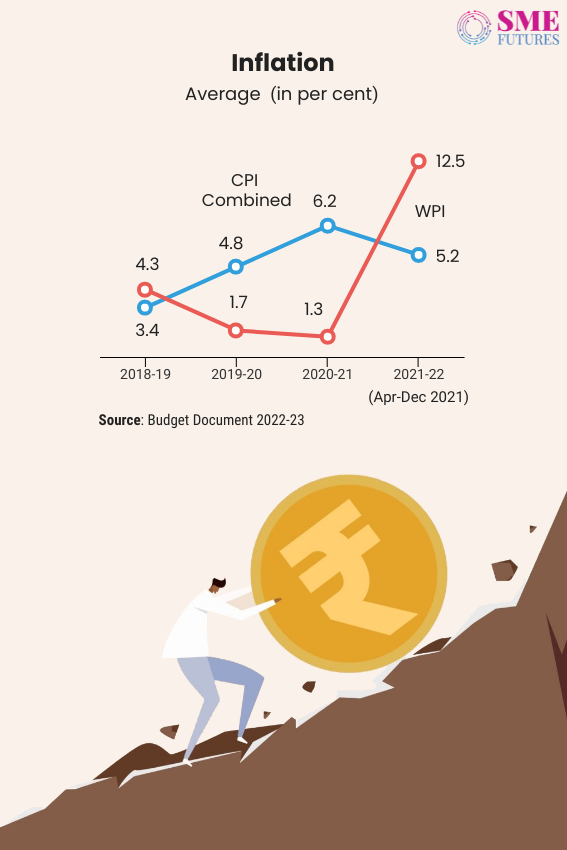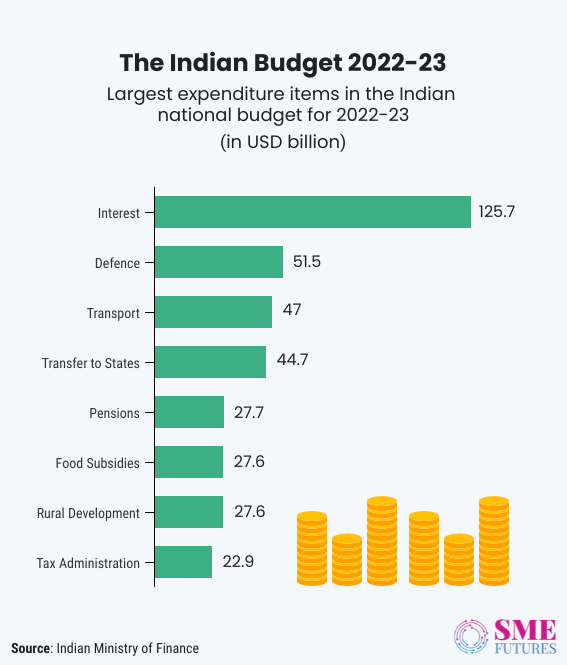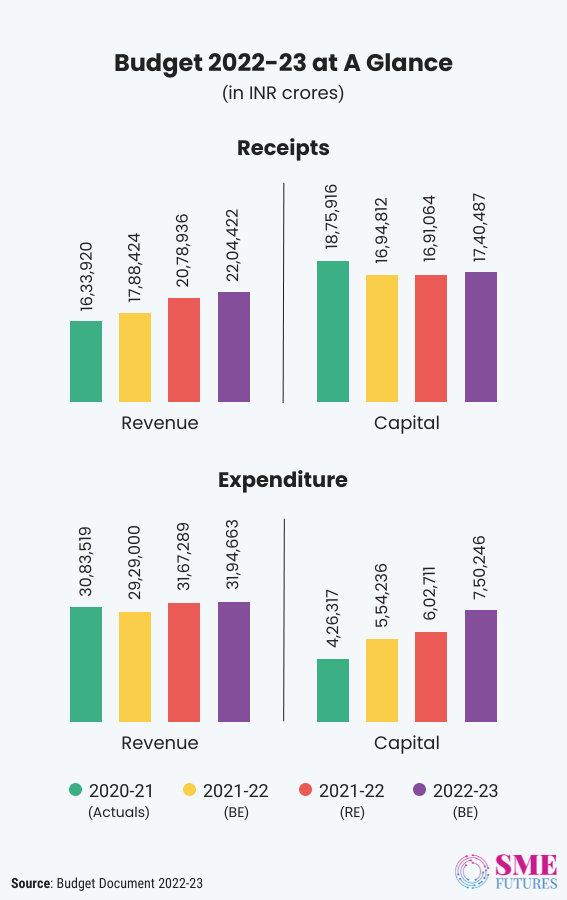The budget is out, and it is worth Rs 39.45 lakh crores. While the government is projecting it as a visionary step towards a self-reliant and modern India, India Inc is calling it an inclusive and infrastructure-heavy budget.
“A pragmatic and promising budget for Aatmanirbhar Bharat. Gives impetus to make India a $5 trillion economy, doubling the farmers income and achieving ease of doing business.”
Pradeep Multani, President, PHD Chamber of Commerce and Industry.
“A balanced and target oriented budget. The focus on promotion of the digital economy, health, infrastructure, aviation, energy transition, and climate action with an inclusive approach will spur the country’s economic growth,”
Lalit Beriwala, Director, Shyam Steel Industries Ltd and Sr. VP, Merchants Chamber of Commerce & Industry
“The intent of the government is clear. Infrastructure and the digital economy are where the growth and jobs will come from. Canada’s largest pension funds and investment firms have recently invested billions of dollars on infrastructure, real estate and even the start-ups in India. This budget opens up a plethora of opportunities for Canada and will propel the Indo-Canadian relationship,”
Nadira Hamid, CEO, Indo-Canadian Business Chamber.
Now let’s focus on some key numbers.
Fastest economic growth
Adjusted for inflation, according to the government estimates, India’s real GDP is expected to grow by 9.2 per cent in 2021-22. Followed by an 8-8.5 per cent growth in FY22-23.
While the estimate for nominal GDP growth is of 11.1 per cent in 2022-23, which measures real growth combined with inflation.
The economy is expected to recover 101.3 percent of its pre-pandemic output in 2019-20. This is on the back of a strong rebound in several high-frequency indicators in the third quarter of 2021-22, as well as due to the rapid progress in vaccination coverage.
However, the risk of severe infection, supply-side disruptions, a weak labour market, and inflation remain the key areas of concern.

Commenting on the GDP projections post the budget, Industry analysts from Deloitte expect the economy to grow between 8.7 per cent and 9.4 per cent in FY22, followed by an equally strong growth of 9 per cent and 7.5 per cent in FY 23 and FY24 respectively.
Various other industry sources too are of the opinion that these projections will boost all the major sectors.
“The budget impetus on growth with a GDP growth of 9.2 per cent for FY 2022-23 will accelerate the Coding & Marking (C&M) industry,”
says Shiva Kabra, Jt. MD at Control Print Limited.
Inflation
CPI inflation reached a five-month high of 5.6 percent in December 2021, owing to rising cooking gas prices, while core inflation remained high at 6.1 percent.
What to expect in FY23—India should be wary of imported inflation, particularly as a result of the rising global energy prices and supply-chain disruptions.

Expenditure, receipts and deficits
This year, the government proposes to spend Rs 39,44,909 crores in 2022-23, which is an increase of 4.6 per cent over the revised estimate of 2021-22. In 2021-22, the total expenditure is estimated to be 8.2 per cent higher than the budget estimates.
If we talk about the receipts (other than borrowings) in 2022-23, they are expected to be about Rs 22,83,713 crores. Which is an increase of 4.8 per cent over the revised estimate of 2021-22. In 2021-22, total receipts (other than borrowings) are estimated to be 10.2 per cent higher than the budget estimates.
Now let us look at the deficits. Revenue deficit in 2022-23 is targeted at 3.8 per cent of the GDP, which is lower than the revised estimate of 4.7 per cent in 2021-22.
The fiscal deficit reached 46.2 percent of the full year target during April−Nov 2021, amidst a rise in tax collections. The deficit for FY22 is expected to be 6.9 percent. While fiscal deficit in 2022-23 is targeted at 6.4 per cent of the GDP, i.e., Rs 16,61,196 crores. This is lower than the revised estimate of FY22 (marginally higher than the budget estimate of 6.8 per cent of the GDP). Interest expenditure at Rs 9,40,651 crores is estimated to be 43 per cent of the revenue receipts.
On divestments, the targets have been slowed down. For FY23, the FM has kept it at Rs 65,000 crores. While the aim for the current financial year has been decreased to Rs 78,000 crores.

Largest expenditure items
Because modernisation is the country’s theme nowadays, transportation infrastructure has been heavily funded. Defence, among other things, received a significant amount of funding in the upcoming fiscal year, as the spending in this sector is increasing. However, interest payments continue to be the largest budget item, and they have been rising at a rapid pace as a result of the pandemic-induced debt growth.
Coronavirus-related food subsidies, which were included in the budget of 2021 beginning in April, were repealed. While an increase in funds for rural development was applauded in comparison to last year’s budget, the amount is actually a step down from the 2020-21 provision.
Budgetary items like agriculture and tax administration are expanding as well. The latter is also slated for modernisation as part of the administration’s ‘ease of living’ initiative, with the goal of, for example, reducing the amount of time businesses must spend on tax compliance.
See this chart.

Defence Ministry tops the chart
If we talk about ministries, the Defence Ministry has got the maximum allocation, just like last year. The budget allocated to it for FY23 is Rs 5,25,166.15 crores, while it was Rs 4,78,196 crores in 2021.
Similarly, like last time, after the Defence Ministry, the Consumer Affairs, Food, and Public Distributions Ministry received the most funding – Rs 2,17,684.46 crores. In 2021 too, this ministry got the second highest allocation of Rs 2,56,948 crores.
While the Ministry of Road Transport and Highways came third on this list with Rs 1,99,107.71 crores. The difference from last year’s budget is approximately Rs 81 lakh crores, as it got Rs 1,18,101 crores last year.
Let’s see how the Finance Minister has distributed the budget allocations among them.

Where the rupee comes from and where it goes
The total government spending is expected to be 4.6 per cent more than the current year. As we closely peruse the budget document, we find that out of every rupee that comes into the government coffers, 58 paise will come from direct and indirect taxes, 35 paise from borrowings and other liabilities, 5 paise from non-tax revenues like disinvestment and 2 paise from non-debt capital receipts.
Goods and services tax (GST) will contribute 16 paise to every rupee’s revenue, while corporation tax will contribute 15 paise to each rupee earned.
The government is also looking to earn 7 paise for every rupee from Union Excise Duty and 5 paise from customs duty. Income tax will yield 15 paise from every rupee collected.
On the expenditure side, the biggest outlay component are interest payments at 20 paise for every rupee, followed by the states’ share of taxes and duties at 17 paise. The allocation for defence stands at 8 paise.
Expenditure on central sector schemes will be 15 paise, while the allocation for centrally sponsored schemes will be 9 paise.
The expenditure on the ‘Finance Commission and other transfers’ is pegged at 10 paise. Subsidies and pension will account for 8 paise and 4 paise, respectively, from each rupee spent. The government will spend 9 paise from every rupee on ‘other expenditures’.

The market’s perspective
After closely observing these figures, various analysts and industry experts have discrete perspectives on the same.
Puneet Pal, Head-Fixed Income, PGIM India Mutual Fund says that the government continues to improve the mix of overall expenditure by increasing the allocation to capital spending by 35 per cent and by reducing subsidies, thus laying the path for an investment led recovery.
According to him, the revenue projections seem reasonable and even somewhat conservative.
“With tax revenues budgeted to grow at 9.60 per cent, the disinvestment target of Rs 650 billion for FY23 also looks quite reasonable. So, the revenue projections are quite credible. The revenue deficit is budgeted to come down to 3.8 per cent from 4.70 per cent,” he says.
He also feels that the fiscal deficit numbers are wider than expected for FY22 and FY23. “The market was expecting it to be 6 to 6.2 per cent of the GDP,” he points out.
On the other hand, Economist and author RP Gupta feels that the government did not discuss and analyse the achievements and failures of its targets in the previous budget. More so, the weaknesses in the economy have neither been spelt out clearly nor have they been fully addressed.
In his opinion, in addition to unemployment, high inflation too has served to compound the miseries of the poor and the middle class.
“Cash transfers and free rations are not a long-term solution. The budget could have provided a fiscal and monetary stimulus besides policy support to the unorganised sector, the farm sector and the MSME sector, all of which provide the largest amount of employment in the country,” he comments.
He opines that the growth in imports is at a record high level which has nullified the benefits of the growth in exports. “India must cut gold import through the Modified Gold Monetization scheme. The import of primary energy (oil, gas and coal) must be reduced by boosting domestic production and energy saving. It is needless to say that the trade deficit directly reduces the GDP,” he elaborates.
“A higher allocation in the budget for capex and infra spending is indeed praiseworthy. However, government investment alone can’t support the growth target of 8-8.5 per cent, that has been fixed in the budget. Therefore, India must undertake a series of regulatory reforms for boosting private investment,” Gupta further adds.
Also, high inflation (wholesale) could be a game spoiler. The monetary policy can’t resolve this problem. This is due to the increase in the cost of the basic inputs, mainly energy, minerals and logistics. For which, suitable policy intervention is required.
“Few policy announcements have been made and I am sure that in the coming days, The Government of India will make more announcements for overcoming these impediments. So that, the growth target of 8.0-8.5 per cent for F/Y-2022-23 might be achieved and the job crisis can finally be resolved,” says Gupta.
On the whole, the sentiments of India Inc. are positive and it is optimistic about Sitharaman’s fourth budget announcements. The experts had predicted that the government would take steps to accelerate demand, which it has done by drastically increasing capital expenditure. Overall, the analysts believe that the government has presented a well-balanced strategy for revitalising India’s economy. However, it is the volatilities in the market and the multifarious challenges that the industries might have to face going forward, that will ultimately determine how the economy fares in the long run.











